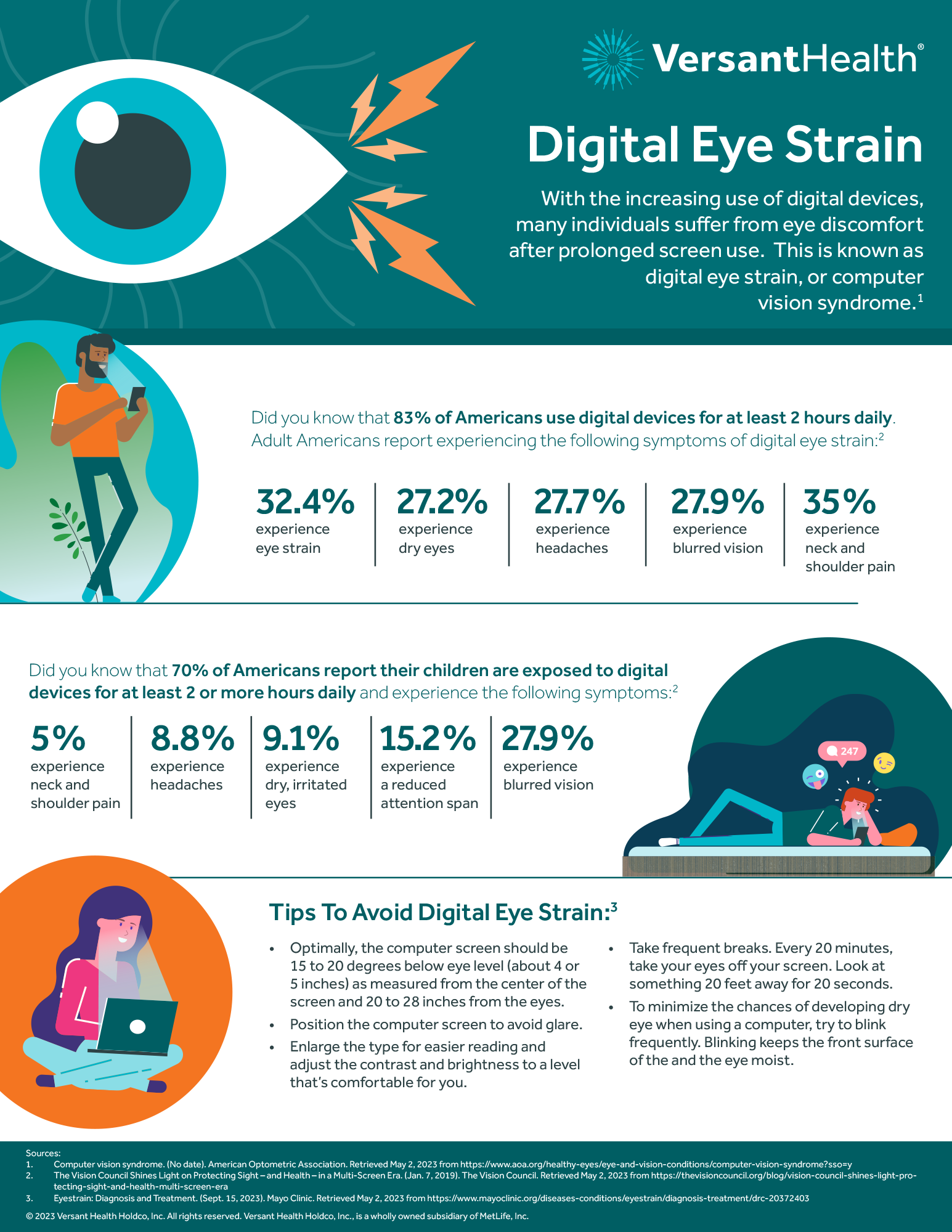Today, screen time is no longer an occasional necessity—it’s an unavoidable constant. For freelancers, remote employees, corporate professionals, and anyone working in an office environment, spending 8 to 12 hours a day in front of a computer screen is the new norm. While this connectivity boosts productivity and flexibility, it also introduces a silent strain on one of our most vital senses: our vision. From burning eyes to headaches and blurry vision, digital eye strain—Computer Vision Syndrome—is an increasingly common complaint among the modern workforce.
The good news? The right pair of prescription eyeglasses designed for screen use can help protect your eyes, improve comfort, and even enhance productivity.
The Rise of Digital Eye Strain in a Remote Work Era
The remote work revolution has allowed millions to set their schedules and work from anywhere. But this autonomy has come with a cost: increased screen exposure. Whether juggling Zoom meetings, answering Slack messages, editing presentations, or writing content, today’s professionals spend most of their workday on digital devices.
According to a study by the Vision Council, over 60% of Americans report experiencing symptoms of digital eye strain, with complaints including:
- Dry, irritated eyes
- Blurred vision
- Headaches
- Neck and shoulder pain
These symptoms are not exclusive to those with pre-existing vision issues. Even individuals with perfect eyesight can suffer from digital strain if they spend extended hours in front of a screen.

How Screens Affect Our Eyes
Digital devices emit blue light—a high-energy visible (HEV) light that penetrates deeply into the eye and contributes to fatigue. Our eyes constantly shift focus when reading or typing, causing the muscles to overwork. Combine that with poor lighting, glare from screens, and improper screen distance, and you’ve got the perfect recipe for discomfort.
Moreover, when we look at screens, our blink rate drops by nearly 50%, contributing to dryness and irritation. Office workers and freelancers working in front of a screen for more than two hours daily are especially at risk.
Prescription Eyeglasses with Digital Protection
For those who already wear glasses, having an updated prescription is essential. But investing in prescription eyeglasses designed specifically for digital use makes a real difference in reducing eye strain. These aren’t your ordinary lenses—they’re crafted with additional coatings and features that provide tangible benefits:
1. Blue Light Blocking Technology
These lenses filter out harmful blue light emitted from screens, which can disrupt your sleep patterns and cause eye fatigue. Many remote professionals notice improved sleep and reduced headaches after switching to blue light-blocking prescription eyeglasses.
2. Anti-Reflective Coatings
These coatings reduce glare from overhead lights and screens, minimizing distractions and relaxing the eyes. This is especially useful in brightly lit office environments or during long video calls.
3. Computer-Specific Lenses
Also called “intermediate vision lenses,” these are designed for the distance between your eyes and a computer screen—about 20 to 26 inches. Unlike standard prescription lenses, which optimize distance or reading vision, these target the digital sweet spot.
Prevalence of Digital Eye Strain:
- A 2025 study by VSP Vision Care and Workplace Intelligence found that 68% of employees experience symptoms of digital eye strain, such as blurred vision, eye strain, and dry, itchy eyes.
- The same study reported that 59% of employees feel digital eye strain negatively impacts productivity.
- Additionally, 51% of employees stated that digital eye strain diminishes their overall well-being and quality of life.
Source
Impact of Screen Time:
- Employees are averaging 97 screen time per week, with more than a third of that time attributed to work-related activities.
- Prolonged screen exposure has led to 63% of workers reporting at least one eye issue, up from 50% the previous year. ( Source )
Effectiveness of Blue Light Blocking Glasses:
- While some studies suggest that blue light blocking glasses can help reduce digital eye strain and improve sleep quality, the evidence is mixed. For instance, a 2024 article from Verywell Health indicates that these glasses may not significantly prevent eye strain or enhance sleep quality.
- Conversely, a 2024 report from Lenskart suggests that blue light-blocking glasses continue to be useful tools for managing digital eye strain and improving sleep quality.
Market Growth:
- The global market for blue light blocking glasses was valued at $2.7 billion in 2023 and is projected to reach $5.2 billion by 2032, growing at a CAGR of 7.8%.
Why Remote Workers and Freelancers Need This the Most
Unlike traditional office settings that may include built-in ergonomics and scheduled breaks, remote work environments often lack structured routines. Freelancers, in particular, may find themselves glued to screens for uninterrupted hours without realizing the toll it takes on their eyes.
Additionally, the flexibility of remote work sometimes means working from unconventional setups—on the couch, in dim lighting, or even outdoors. These environments can increase the risk of poor posture and screen glare, amplifying digital eye strain.
Prescription eyeglasses with digital enhancements are a much-needed buffer between your eyes and these less-than-ideal conditions. They allow you to focus on your tasks without sacrificing visual health.
Corporate Wellness Programs and Digital Eye Health
Forward-thinking companies are starting to recognize that eye health is essential to workforce well-being. Corporate wellness programs now include vision benefits and stipends for prescription eyeglasses that support digital productivity.
Providing access to quality eye care for employees working remotely or in hybrid settings is more than just a perk—it’s a strategic investment in performance and retention. Fewer headaches and clearer vision directly translate to fewer sick days, improved focus, and increased efficiency.
How to Reduce Eye Strain Alongside Proper Eyewear
While prescription eyeglasses play a central role, combining them with these habits can further reduce strain:
- Follow the 20-20-20 Rule: Every 20 minutes, look at something 20 feet away for at least 20 seconds.
- Adjust Lighting: Ensure your work environment has balanced lighting to avoid harsh glare.
- Use Ergonomic Setups: Keep your monitor at eye level and about an arm’s length away.
- Stay Hydrated and Blink Often: These habits combat dry eyes and fatigue.
The Bottom Line
In a world where screen time is non-negotiable, digital eye strain doesn’t have to be. Whether you’re a freelancer hustling from home, a remote employee logging into international meetings, or a corporate professional balancing spreadsheets, the right prescription eyeglasses can be a game-changer.
They don’t just help you see better—they help you work smarter, longer, and more comfortably. As the lines between digital and physical continue to blur, taking proactive steps to protect your vision should be a priority in any modern work strategy.

Andrej Fedek is the creator and the one-person owner of two blogs: InterCool Studio and CareersMomentum. As an experienced marketer, he is driven by turning leads into customers with White Hat SEO techniques. Besides being a boss, he is a real team player with a great sense of equality.
